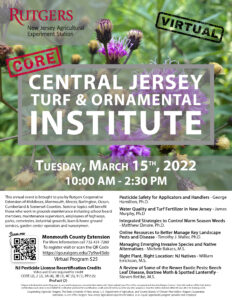NJDA Secretary Fisher recently shared a memo regarding a number of private pesticide licensees who have not received their current licenses from the NJDEP Pesticide Bureau. Following is most of the text of that memo.
Through a recent meeting between NJDA and the NJDEP Pesticide Bureau staff, we have identified two primary areas that may need your particular attention to ensure your license remains active:
1.) Not receiving nor submitting their invoices via the postal service through the mail. In this case, licensees can get their invoices online through the NJDEP pesticide website by submitting their invoices to NJDEP for processing when received, even if there is a $0.00 (zero) dollar value.
2.) Lack of credits through either Core or PP2, or a combination of both. There is a 5-year time period for all licensees to get enough credits for their license. Courses are available online for licensees to get credits. Once the coursework is completed online, it should take approximately two weeks for the unit to process the information to post on their website. Directions below explain how to locate and pay for invoices (which must be submitted back to the unit for processing, even if it is a $0.00 [zero] dollar invoice).
Licensees can check on the number of credits they have acquired by going to the NJDEP pesticide webpage and following the directions posted there.
Below are the directions necessary to look up invoice numbers and then use said numbers to pay for a license online. Once again, we remind you paying your invoice online is a faster way to receive your license. All invoices, even if it’s $0.00 (zero) dollars need to be processed, otherwise your license will not be issued.
Please follow the NJDEP directions below:
Directions to locate an invoice number
- Go to www.pcpnj.org
- Scroll to the bottom of the page. Under heading About Us click on “Pesticides”
- Scroll to the bottom of the page and “Click here to view Links.”
- Under the heading Online Payments and Reports Click on the link labelled “Invoice Numbers for Unpaid License Invoices”
- Enter License number (make sure to capitalize any letters at the end or your license number) and other items
- Click Submit
Directions to pay for license online
- Go to www.pcpnj.org
- Scroll to the bottom of the page. Under heading About Us click on “Pesticides”
- Scroll to the bottom of the page and “Click here to view Links.”
- Under the heading Online Payments and Reports, click on the link labelled “Pay For Your License Online”
- Enter Invoice number (found on paper invoice, or previously located using our website using directions above)
- Enter License number (make sure to capitalize any letters at the end or your license number)
- Click Submit and follow prompts from there
Sincerely,
Douglas H. Fisher


